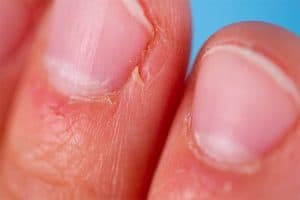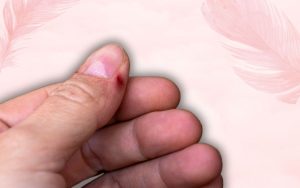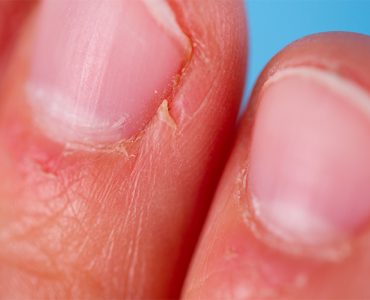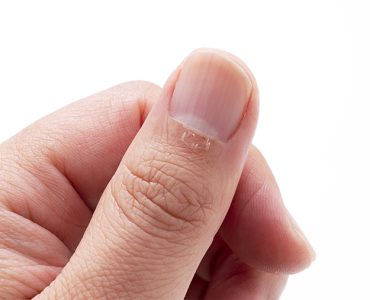Have you ever experienced the annoyance and discomfort of a pesky nail issue? Perhaps you’ve encountered a painful condition that makes even simple tasks like typing or walking a challenge. Nail problems can be bothersome, and two common conditions that often cause trouble are hangnails and ingrown nails.
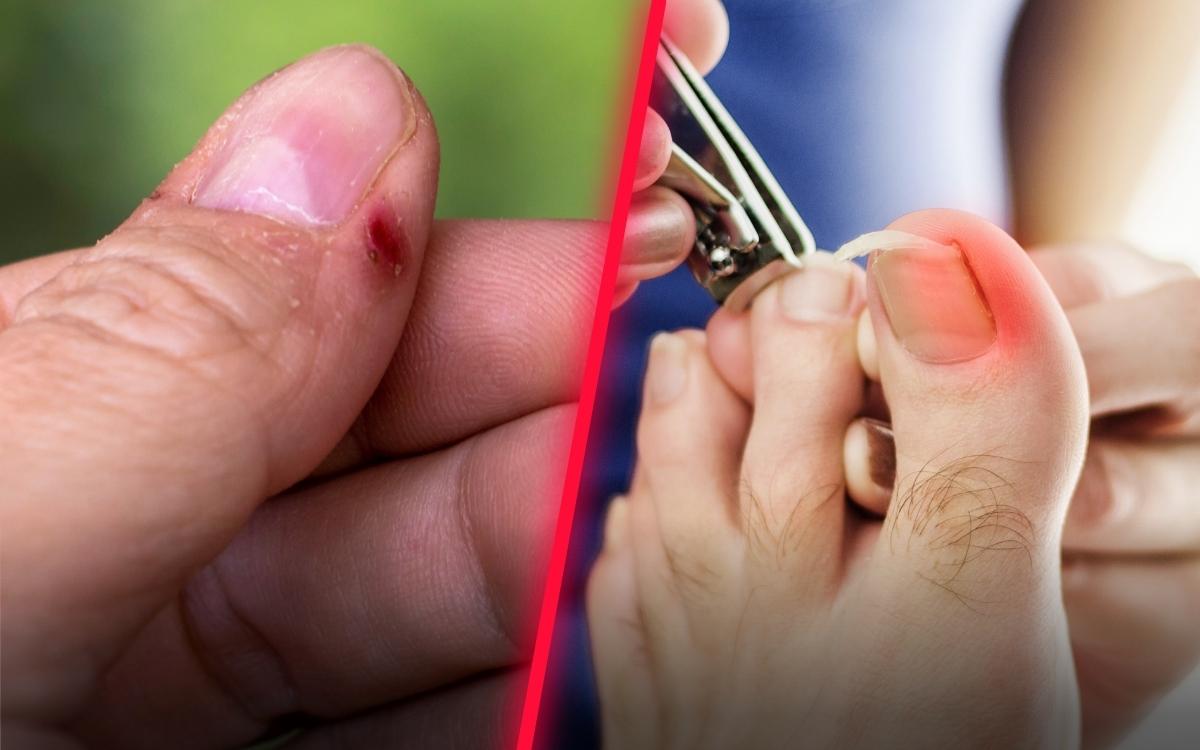
While these terms are often used interchangeably, they actually refer to distinct nail issues with unique characteristics and treatments. In this blog post, we will explore the differences between hangnails and ingrown nails, helping you identify and address these problems effectively.
Understanding Hangnails
Hangnails are a common nail issue that many of us have encountered at some point. To better understand hangnails, let’s delve into their definition, characteristics, causes, symptoms, and prevention strategies.
Definition and Characteristics
Hangnails are small, triangular pieces of torn or partially detached skin at the sides or corners of the nails. They often appear as small flaps or jagged edges of skin that can be quite bothersome. Hangnails are typically more common on the fingers rather than the toes.
Causes of Hangnails
Several factors contribute to the development of hangnails. One of the primary causes is dry skin. When the skin around the nails becomes dry, it loses its natural elasticity and can easily crack or tear, resulting in hangnails.
Additionally, habits such as nail biting or picking can further exacerbate the problem. Improper nail trimming techniques, such as cutting the cuticles or trimming too close to the nail bed, can also lead to the formation of hangnails.
Read This Next:
Symptoms of Hangnails
Hangnails are not just unsightly; they can also cause discomfort. Common symptoms of hangnails include pain and tenderness around the affected area. You may experience redness and mild swelling as well. In some cases, hangnails can become inflamed or even infected, leading to increased pain and the formation of pus.
Prevention Tips for Hangnails
While hangnails can be irritating, there are measures you can take to prevent their occurrence. Regular moisturizing is key to keeping the skin around your nails hydrated and supple, reducing the likelihood of dryness and cracking.
Choose a good-quality hand cream or cuticle oil and apply it daily to keep your skin well-nourished. Proper nail care techniques are also important. Avoid cutting or picking at your cuticles, as this can damage the protective barrier and increase the chances of hangnails.
Instead, gently push back the cuticles with a cuticle pusher. Additionally, be cautious while trimming your nails, ensuring that you leave a small margin between the edge of the nail and the surrounding skin.
Unveiling Ingrown Nails
Ingrown nails, like hangnails, are a prevalent nail problem that can cause significant discomfort. Let’s uncover the definition, characteristics, causes, symptoms, and prevention strategies associated with ingrown nails.
Definition and Characteristics
An ingrown nail occurs when the edge of the nail grows into the surrounding skin instead of growing straight out. This can lead to pain, redness, inflammation, and even infection. Ingrown nails most commonly affect the toes, particularly the big toe, but they can occur on any toe.
Causes of Ingrown Nails
The primary cause of ingrown nails is often improper nail trimming. Cutting the nails too short or rounding the edges can encourage the nail to grow into the adjacent skin. Wearing tight shoes or improper footwear that puts excessive pressure on the toes can also contribute to the development of ingrown nails. Additionally, any trauma or injury to the nail, such as stubbing your toe or dropping something heavy on it, can cause the nail to grow irregularly.
Read This Next:
Symptoms of Ingrown Nails
One of the key symptoms of an ingrown nail is pain and tenderness around the affected area. The skin around the ingrown nail may become red, swollen, and inflamed. As the condition progresses, you may notice the formation of a small nail spike that pierces the skin, causing further discomfort and even bleeding. In some cases, ingrown nails can lead to infection, characterized by pus formation, increased redness, warmth, and throbbing pain.
Prevention Tips for Ingrown Nails
Preventing ingrown nails starts with proper nail trimming techniques. Trim your nails straight across and avoid rounding the corners. This allows the nail to grow outward instead of curving into the skin. It’s also essential to wear comfortable shoes that provide enough space for your toes to move freely.
Avoid tight or ill-fitting footwear that puts pressure on the nails. If you participate in activities that increase the risk of nail trauma, such as sports or manual labor, consider wearing protective footwear. Taking these preventive measures can significantly reduce the likelihood of ingrown nails.
Spotting the Differences
When it comes to distinguishing between hangnails and ingrown nails, understanding the key dissimilarities can be beneficial. Let’s explore various aspects that can help you differentiate between these two common nail conditions.
Location and Appearance
Hangnails primarily occur at the sides or corners of the nails. They appear as small flaps or jagged edges of torn or detached skin. In contrast, ingrown nails occur when the edge of the nail grows into the surrounding skin. You may notice the skin around the nail becoming red, swollen, and tender, with the nail appearing embedded or buried within the skin.
Causes and Triggers
Hangnails are often a result of dry skin and nail-related habits such as biting or picking. Dryness makes the skin less supple, leading to cracking and the formation of hangnails. On the other hand, ingrown nails are primarily caused by improper nail trimming techniques, such as cutting the nails too short or rounding the edges. Tight shoes or footwear that compresses the toes can also contribute to ingrown nails, as they exert pressure on the nails and force them to grow irregularly.
Read This Next:
Pain and Discomfort Level
Hangnails typically cause mild to moderate pain and discomfort. The torn or detached skin can be sensitive and tender, especially if it catches on objects or if you accidentally pull on it. Ingrown nails, on the other hand, often result in moderate to severe pain. The nail growing into the surrounding skin can cause significant inflammation, pressure, and even sharp discomfort. If left untreated, ingrown nails can become quite painful and lead to infection.
Treatment Approaches
Treatment approaches for hangnails and ingrown nails differ based on the condition. For hangnails, home remedies can often provide relief. It involves keeping the affected area clean and moisturized, applying over-the-counter antibiotic ointments, and using warm water soaks to soften the skin.
It’s important to avoid picking at hangnails, as it can worsen the condition and increase the risk of infection. If the symptoms persist or worsen, seeking medical attention is advisable.
In the case of ingrown nails, professional treatment may be necessary, especially if the nail is embedded deep or if there is an infection present. Treatment options may include partial nail plate avulsion, where a portion of the nail is removed, or nail edge resection, where the ingrown portion of the nail is trimmed or lifted.
Antibiotics may be prescribed if an infection is present. It’s crucial to seek professional help for severe or recurring cases of ingrown nails to prevent complications.
Conclusion
Understanding the differences between these two problems is crucial for proper identification and treatment. Hangnails result from dry skin and typically occur on the sides or corners of the nails, while ingrown nails happen when the nail grows into the surrounding skin, leading to inflammation and infection. While some home remedies can provide temporary relief, it’s important to seek medical attention if the symptoms worsen or persist.
By taking proactive steps to prevent these conditions and addressing them promptly when they occur, you can maintain healthy, pain-free nails and avoid unnecessary discomfort. Remember to practice good nail hygiene, keep your hands moisturized, and consult a professional for expert advice when needed. Your nails will thank you!


